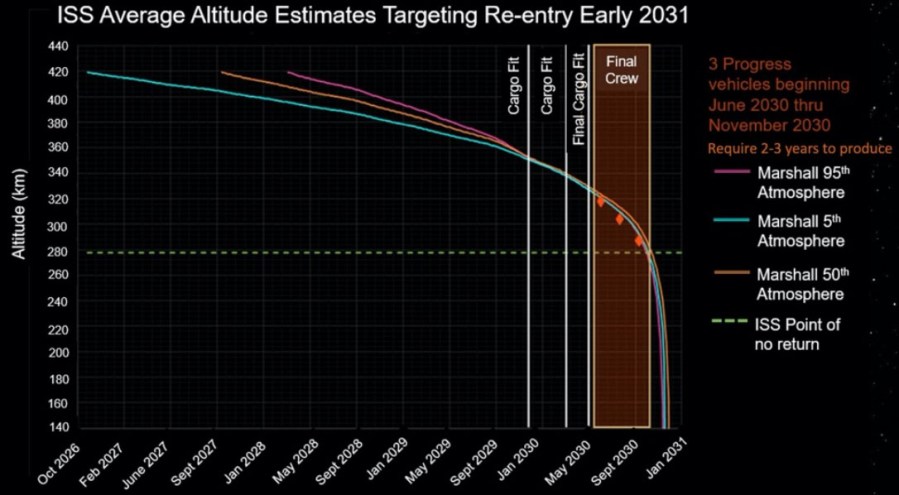(NEXSTAR) – NASA is planning a splashy retirement party for the International Space Station (ISS), with plans to crash it into the Pacific Ocean in 2031.
NASA announced the plan in a report submitted to Congress earlier this week. The agency also provided an outline for the continuation of space-based research on subsequent low-Earth-orbit stations operated by the commercial sector.
According to NASA’s timeline, NASA will begin de-orbiting procedures sometime between late 2026 and mid-2028, lowering the altitude of the ISS (and increasing its velocity) until, eventually, station’s operators can perform a re-entry burn over an uninhabited part of the Pacific Ocean, according to the report. Three “visiting vehicles” will also help to propel the ISS toward the target area.
Re-entry is scheduled for January 2031.

The ISS, launched in 1998, is expected to remain operational through 2030.
“This third decade is one of results, building on our successful global partnership to verify exploration and human research technologies to support deep space exploration, continue to return medical and environmental benefits to humanity, and lay the groundwork for a commercial future in low-Earth orbit,” Robyn Gatens, director of the ISS at NASA headquarters, said in a press release. “We look forward to maximizing these returns from the space station through 2030 while planning for transition to commercial space destinations that will follow.”
NASA is planning to help the private sector to develop future space stations for researchers to use, an endeavor it is now “technically and financially capable” of doing, said Phil McAlister, director of commercial space at NASA Headquarters.
NASA said its ultimate goal is to become one of the “many customers of these commercial destination providers, purchasing only the goods and services the agency needs.”
In the meantime, NASA reported “high confidence” that the structural health of the ISS can support its extended operation. There is a limit, however, to the “technical lifetime” of the components of its primary structure, which cannot be repaired or replaced in-orbit like its power or life-support systems, NASA said, which is ultimately prompting its retirement.






